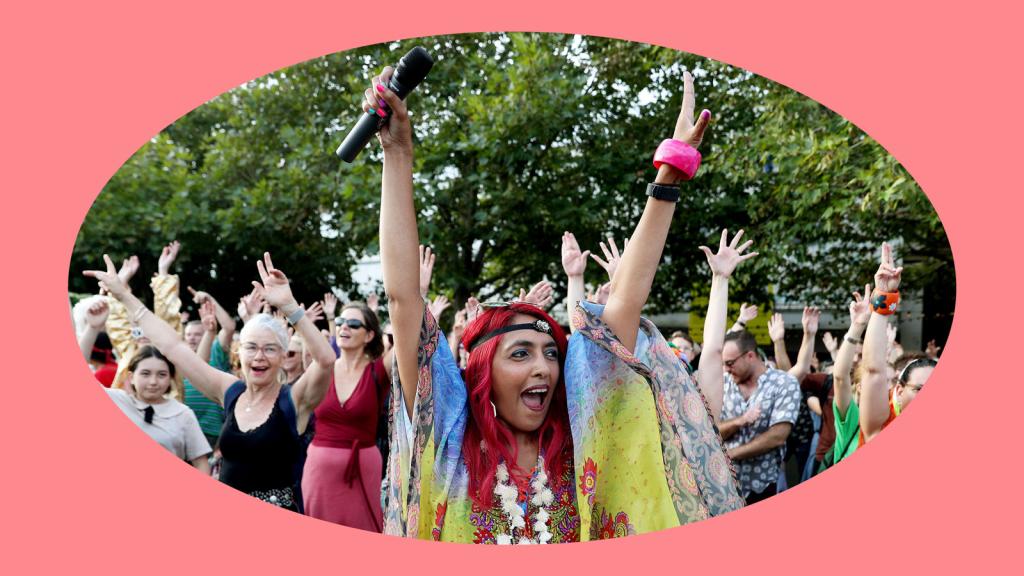This story is part of Fix’s What’s Next Issue, which looks ahead to the ideas and innovations that will shape the climate conversation in 2022, and asks what it means to have hope now. Check out the full issue here.
Maya Hidalgo knows avoiding the worst impacts of a warming world requires completely revamping a way of life driven by consumer capitalism and built on systemic racism. She also knows that this almost insurmountable task will not be accomplished with the pollyannaish hope that someone else will figure it out.
That is why the 17-year-old spent a large chunk of her junior year trying to get schools in her home state of Minnesota to bring climate justice education into their classrooms. When a bill she and several teens wrote with the help of sympathetic lawmakers failed to get a hearing, she and others from Climate Generation’s Youth Environmental Activists took their campaign directly to school districts. They found some support among teachers willing to try including the topic in their lessons. Although the teens are still waiting for instructors to make that happen, Hidalgo says taking small yet important steps like that gives her hope that change is coming.
“Sometimes it’s hard to be hopeful because certain political leaders and certain groups avoid the topic of climate change or don’t believe in it,” says Hidalgo, who lives in the Minneapolis suburb of Bloomington, Minnesota. “But I do think I’m more hopeful because more people are realizing it is an issue that’s connected to social issues, not just the environment.”
[Read: How Gen Z is mentoring their elders on climate]
It can be hard to stave off despair these days. We’re inundated with bad news about everything from COVID-19 to the mounting threats against democracy to, of course, climate change. The headlines on that front have been particularly awful. Killer heat waves in the Northwest. Deadly flooding in New York. Fires scorching the West. Word that we’re actually destabilizing the world’s poles. And then there’s the International Panel on Climate Change report that made clear we’re locked in to a certain amount of damage. No wonder one recent survey found 52 percent of people have little confidence in international efforts to address the crisis.
Yet not all have lost faith, particularly among the young adults coming into the climate movement. Many of them are hopeful, even guardedly optimistic, that things can — and will — get better. Their outlook is shaped not just by an acceptance of the problem, but also a belief in solutions along with the determination to implement them.
“I really like talking with people about what they think could be changed, or what solutions they think we should do, and then talking about what solutions have been created or are being created,” Hidalgo says. “That makes me more excited than just thinking about how many issues there are. I like to look at it as an opportunity to do something about it and have something to work toward.”
This “challenge accepted” attitude, combined with a mounting sense of urgency, an understanding of climate and environmental science, and a yearning to feel connected to a community of like-minded people, can provide renewed hope even to those who have been engaged in the movement for years — or decades. It also is creating a feeling that society has reached a point where action is inevitable.
[Read: We may not save the world, but we can save what’s important to us]
“We are both ready to recognize the vulnerability of the future and to recognize the beauty of a future we could dedicate ourselves to,” says John Byrne, an energy and climate policy professor at the University of Delaware. “This generation is much more ready to act than ever before.”
‘A great turning‘
Byrne joined the climate movement in the 1980s and over the years has watched people, by and large, come to understand the underlying science behind this existential crisis. The movement is no longer focused on convincing everyone there is a problem and has moved beyond science to politics, power, and the will to change. He’s watched students grow increasingly frustrated by the pace of that change, and he is convinced that this generation is committed to addressing the problem at its root.
“There’s an immediacy in their view,” says Byrne, who also is chairman of the Foundation for Renewable Energy and Environment and contributed to Working Group III of the IPCC. “The youth climate movement is what gives me the greatest hope.”
Not only do teens and young adults have no doubt that climate change is real, says Byrne, but they’re also cognizant of how unfair it is. They believe it is morally wrong that the world’s wealthiest nations, largest corporations, and most privileged people are largely responsible for a crisis that disproportionately impacts people of color, frontline communities, and the Southern Hemisphere.
“They take that justice principle seriously,” he says. “This generation has hope about a future that is in balance, and they’re no longer waiting for science or policy or the economy or new technology to tell them what they should do. They want to act.”
Byrne likes to quote “Earthrise,” by Youth Poet Laureate Amanda Gorman, when describing the sense of hope he sees taking hold among activists, particularly young ones: “There is no rehearsal,” Gorman writes. “The time is now … It is our hope that implores us, at our uncompromising core / To keep rising up for an earth more than worth fighting for.”
Granted, hope is by no means a universal feeling. One recent study found about one-third of young adults describe themselves as encouraged about the future, but 60 percent are “very worried.” Many activists of all ages are outraged by the inaction of older generations and are demanding change with an intensity bordering on fury. Yet Byrne sees optimism in their frustration, because their dissatisfaction with the status quo is inspiring them to act.
That’s important, because hope is the byproduct of action, not a prerequisite for it, says Sarah Ray, who leads the environmental studies program at Humboldt State University in Arcata, California. Action leads to results, which fosters hope, creating a virtuous cycle. In her 12 years of teaching, she has found that people inundated with information about the disastrous impacts of climate change won’t be inspired by hearing about a vague solution. They want to know specifically what they can do to make a difference, and they find encouragement in knowing they are not alone in their concern and can join others in fostering change.
Hope is the byproduct of action, not a prerequisite for it.
Maintaining — or restoring — hope and optimism requires focusing on solutions and on their positive (or potentially positive) outcomes, Ray says, adding that she’s still encouraged knowing that she’s part of a collective movement, or a “blessed unrest.” She prefers to focus on what she calls “a story of a great turning rather than a great unraveling.”
“That’s the antidote to my despair: The transformational resilience work and existential qualities required of people to engage in activism despite a lot of bad news,” she says.
That said, the threat of burnout and despair is omnipresent, especially for veteran activists and organizers. Even those new to the work, like Maya Hidalgo in Minnesota, admit to occasionally feeling discouraged. That’s normal, even expected, given the scale of the challenge.
“We’re doing a marathon here, not a sprint,” says environmentalist and author Mary DeMocker.
In her 2018 book, The Parents’ Guide to Climate Revolution, DeMocker offers tips for restoring hope when it wanes. Although the advice is targeted at parents, anyone can benefit from her suggestions. The key, she says, is to practice self-care: Log off. Stop doomscrolling and instead read “good news” stories. Watch a favorite movie. Read a book. Go for a hike.
“Take a rest,” she says. “Playing and goofing off is a really important aspect of keeping optimism alive.”
DeMocker says she feels most hopeful when she’s creatively engaged with others on something meaningful, like an art protest or a conversation about, say, hope in a time of climate change. Her optimism grows as she feels more connected to the things she’s trying to protect — nature, her children, her neighbors, the global activism community. Although she doesn’t feel confident that we’ll reduce atmospheric carbon dioxide anytime soon, she often feels that it is still possible to inspire and mobilize others to make the changes needed to combat this crisis.
“We have a lot we can do and a lot we haven’t tried,” DeMocker says. “My hope lies in movement-building.”
‘I’m just a kid‘
Jack Thompson is new to movement-building, having reinvigorated Delaware’s faltering chapter of the international youth climate organization Fridays for Future in late 2020. He was thrilled to see about 40 people respond to the onslaught of messages he posted on Instagram about it and invigorated by the possibility of making a difference as he spoke with environmental regulators and politicians about getting more people involved and introducing regulations, such as a future carbon tax.
Even though he’s still a rookie activist, the 17-year-old has been concerned about climate change for nearly half his life. The immediacy of it hit him in October 2020, while enjoying an 80-degree day in Rehoboth Beach, a small coastal city two hours east of Washington, D.C. His beautiful afternoon on the beach was an epiphany that climate change is not something that’s coming, but something that’s here and he needed to get involved.
As he dove into researching what he could do, Thompson was startled to learn that sea level rise could leave vast tracts of his state uninhabitable, including Rehoboth Beach. Not long after, he found himself leading his local chapter of Fridays for Future. He knows there is a lot of hard work ahead and many hard decisions to be made, but Thompson says he is hopeful because a growing number of people of all ages understand how dire the situation is, and they’re willing to join him and others in fostering change.
“I’m nothing special,” he says. “I’m not a prodigy. I’m just a kid. But I think seeing a normal kid like me stand up and speak up really helps get more people involved.”
It’s hard not to be inspired by that, to feel a sense of hope, and to think that, together, we might just solve this crisis.
Explore more from Fix’s What’s Next Issue:
- 22 Predictions for 2022
- Climate change is stressful, scary, and sad. We’re gonna need therapy.
- How the Indigenous landback movement is poised to change conservation




